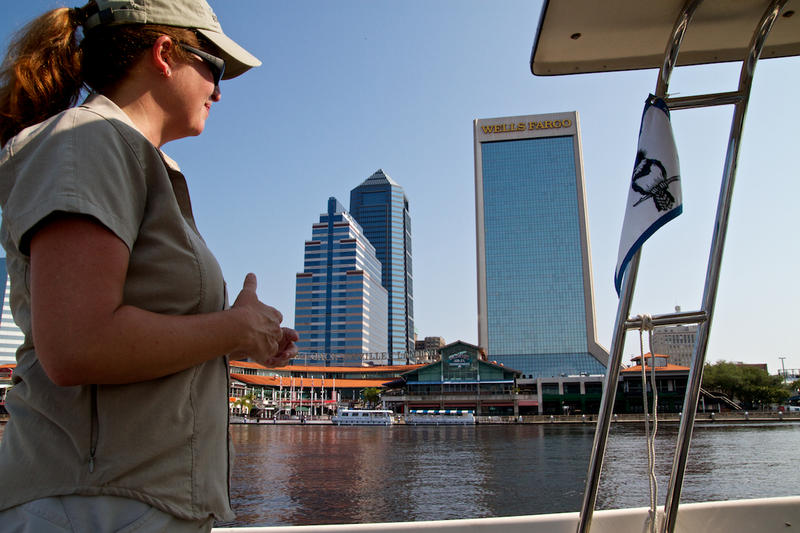LISTEN: St. Johns River dredging raises environmental concerns
At 310 miles long, the St. Johns is the longest river in Florida. It’s flat and slow – flowing at less than half-a-mile per hour – but not lazy. The St. Johns is the state’s most important river for commerce and recreation. Its significance runs deep, but for some, a stretch of the river needs to run deeper.
“Identifying the deepening as a necessity to grow the port happened several years ago,” said Nancy Rubin, Director of Communications for the Jacksonville Port Authority (JAXPORT).
JAXPORT wants to deepen 13 miles of the St. Johns at the mouth of the river – from 40 feet down to 47 feet. That’s what modern, supersized ships need to deliver cars, electronics and thousands of jobs to the region, according to industry analysts.
“The handwriting is on the wall,” said Rubin. “The ships are getting bigger. The industry is moving to economies of scale that require them to put more cargo on one ship that is larger. Many of them are currently too big to call on Jacksonville unless we deepen the river.”
But critics of the deepening project are calling on Jacksonville to steer clear of the project. Critics like St. Johns Riverkeeper Lisa Rinaman, who argues the project is set to deliver not jobs, but environmental damage.
“When you do the deep dredge you’re going to actually bring more saltwater into the system,” said Rinaman. “And so this river will get saltier and saltier, and what that does is put more stress on submerged grasses as well as wetlands and submerged trees.”
Rinaman says the deepening plan – created by the U.S. Army Corps of Engineers – relies on averages and does not account for dangerous spikes in salinity that could kill plants and fish.
“The Army Corps of Engineers has a history of making mistakes,” said Rinaman. “If you look at any project in the state of Florida, there’s been a huge amount of unintended consequences. You don’t have to look any further than what’s happening in Biscayne Bay right now.”
The Port of Miami began deepening their harbor in June. In July, state and county divers discovered sediment from the dredging was covering up fragile staghorn coral – and killing it. The Army Corps had predicted some impact to coral, but there were around 200 additional coral colonies that they hadn’t accounted for. Environmentalists and fisherman sued, and now the coral are being relocated.
That’s the kind of miscalculation that concerns some in northeast Florida. But the Army Corps stands by it’s predictions for the project.
“We are extremely confident in our results,” said Col. Alan Dodd, Commander of the U.S. Army Corps of Engineers Jacksonville District, the agency overseeing both the Jacksonville and Miami deepening projects.
“We are predicting very minor changes in salinity,” said Dodd. “We put a lot of work into using the most state of the art modeling that was available. It’s been used over 200 times on projects around the world.”
The models also help determine the plan’s mitigation measures. Federal law requires large engineering projects – like the Jacksonville Harbor Deepening – to offset environmental damage by improving the environment somewhere else in the river system.
“We are going to purchase about 638 acres of high-value wetlands and shoreline that we’ll put into a conservation status,” said Dodd. “We’re also putting a lot of effort into additional monitoring to look at different impacts on the river and we’ll be able to make adaptive changes.”
But Rinaman said monitoring is not mitigation.
“Monitoring is looking at what happens after the fact,” she said. “There needs to be some sort of plan to restore wetlands, to restore grasses, to bring something back that’s missing.”
The Army Corps of Engineers plans to begin construction on the project in early 2016.

